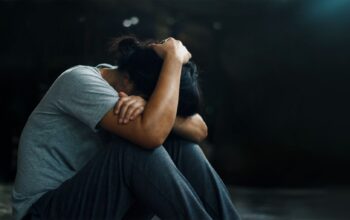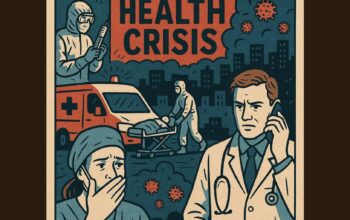by
The Centers for Disease Control and Prevention (CDC) has reported a sharp rise in Mycoplasma pneumoniae infections — commonly known as “walking pneumonia” — across the United States, with children seeing the highest number of cases.
A milder form of pneumonia, the illness affects an estimated 2 million people yearly, though the absence of a national reporting system complicates efforts to track exact numbers.
Michael Chang, MD, an infectious disease expert at UTHealth Houston, told the healthcare website verywellhealth.com that walking pneumonia is often overlooked due to its mild presentation, which shares symptoms with common colds or respiratory infections.
“Many providers don’t check for Mycoplasma or have testing available, so it may be difficult to confirm the diagnosis,” Chang explained.
Dr. Craig Shapiro, an infectious diseases specialist at Children’s National Hospital, noted the growing prevalence of the bacteria in a locally televised interview.
“This is not a new bacteria. It’s a bacteria that commonly causes pneumonia, but we are seeing an increase in detection over the last few weeks,” Shapiro said. “This particular bacteria is what typically causes what we refer to as ‘walking pneumonia.’”
Disproportionate Impact on African Americans
Research has consistently shown that African Americans face a higher incidence of pneumonia cases compared to other racial groups. They are also more likely to experience severe complications and higher mortality rates.
Socioeconomic factors, limited access to preventive healthcare measures such as vaccinations, and a higher prevalence of chronic conditions like asthma and diabetes contribute to these disparities.
For example, MedStar Health, which operates 33 urgent care centers in Washington, D.C., Maryland, and Northern Virginia, reportedly diagnosed 1,789 cases of walking pneumonia in October 2024, up from just 391 in the same month in 2023.
Recognizing Symptoms and Seeking Care
Walking pneumonia spreads through respiratory droplets during close contact and typically features symptoms such as persistent coughing, fatigue, chills, and shortness of breath.
Dr. Chang noted that the infection can linger for weeks or even months, mainly when it affects the cilia in the lungs, which play a crucial role in clearing mucus and bacteria.
The cases tend to be mild in otherwise healthy children, but more severe illnesses can occur in children with preexisting health conditions. Shapiro explained that children with weakened immune systems or underlying lung diseases, such as asthma, are at greater risk and should seek immediate medical attention if they experience symptoms.
“It typically causes very mild disease … usually a few days of fever, cough, sometimes body aches and chills. But in children who have weakened immune systems or who have underlying diseases of the lungs, such as asthma, they can have more severe disease and definitely should seek medical attention if they’re having any of those symptoms,” Shapiro said.
Parents should also monitor for signs of labored breathing, difficulty with physical activity, or persistent chest tightness.
Nachman, a pediatric infectious disease expert, emphasized that these symptoms, particularly when combined with a lingering dry cough, warrant prompt consultation with a healthcare provider.
Preventive Measures and Challenges
Antibiotics like azithromycin and doxycycline are commonly prescribed for suspected Mycoplasma infections, but they are most effective when started within the first three to four days of symptoms.
Dr. Chang noted that while antibiotics may not significantly reduce prolonged coughing fits, they are critical for managing the early stages of the illness.
Preventive measures remain crucial.
Shapiro highlighted simple yet effective steps to reduce transmission, including good hygiene and keeping symptomatic children at home.
“It’s important to remember to wash your hands. That’s going to be the best way to prevent any infection. Make sure that we’re covering our mouth and our nose when we cough and sneeze, and making sure that if your child is sick, you don’t want to send them to school. Really, you should keep them home so that they’re not around other people,” Shapiro said.
The lack of a vaccine to prevent Mycoplasma infections adds to the challenge of controlling outbreaks, particularly in communities already facing healthcare inequities. “Recognizing the symptoms early and ensuring equitable access to healthcare are key to improving outcomes for those most affected by this illness,” Dr. Chang said.




